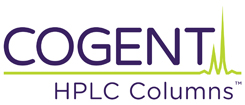1. Reverse the flow direction in the column. Attach the column fitting that is normally at the outlet to the tubing that is normally connected to the inlet. Direct the column outlet to waste, not to the tubing leading to the detector. The reason for this is so any contaminants coming off the column don’t end up in the detector and damage it. This is mainly an issue for particulate matter which may be at the column frit inlet.
2. Select the appropriate wash solvent. The choice of wash solvent will depend on the type of contaminant that is suspected to be present. If the contaminants are particulate matter, it will not matter what type of wash solvent you choose.
For chemically adsorbed contaminants, you should consider how they are retained on the column and what would be a strong eluting solvent. For example, if you are using a Reversed Phase method and are experiencing carryover Issues, it iis likely that the contaminants are strongly hydrophobic. In this case, 100% acetonitrile would be a good choice. For the Diamond Hydride™, 50/50 DI water / methanol or 50/50 DI water / isopropanol works well for many chemical contaminants.
3. Wash out contaminants. Turn on the pump. For chemical contaminants, select a low flow rate and flush the column overnight. For particulate matter, select a higher flow rate. High flow rates work better for particulate matter because it may require more force to remove particles that have become trapped in the column frit.
4. Reconnect the column in the normal direction. Perform your method and see if the issue has been resolved. Particulate contaminants will often show up as a higher than normal column pressure. Chemical contaminants may show up as ghost peaks, changes in chromatography, unusual baselines, etc.


